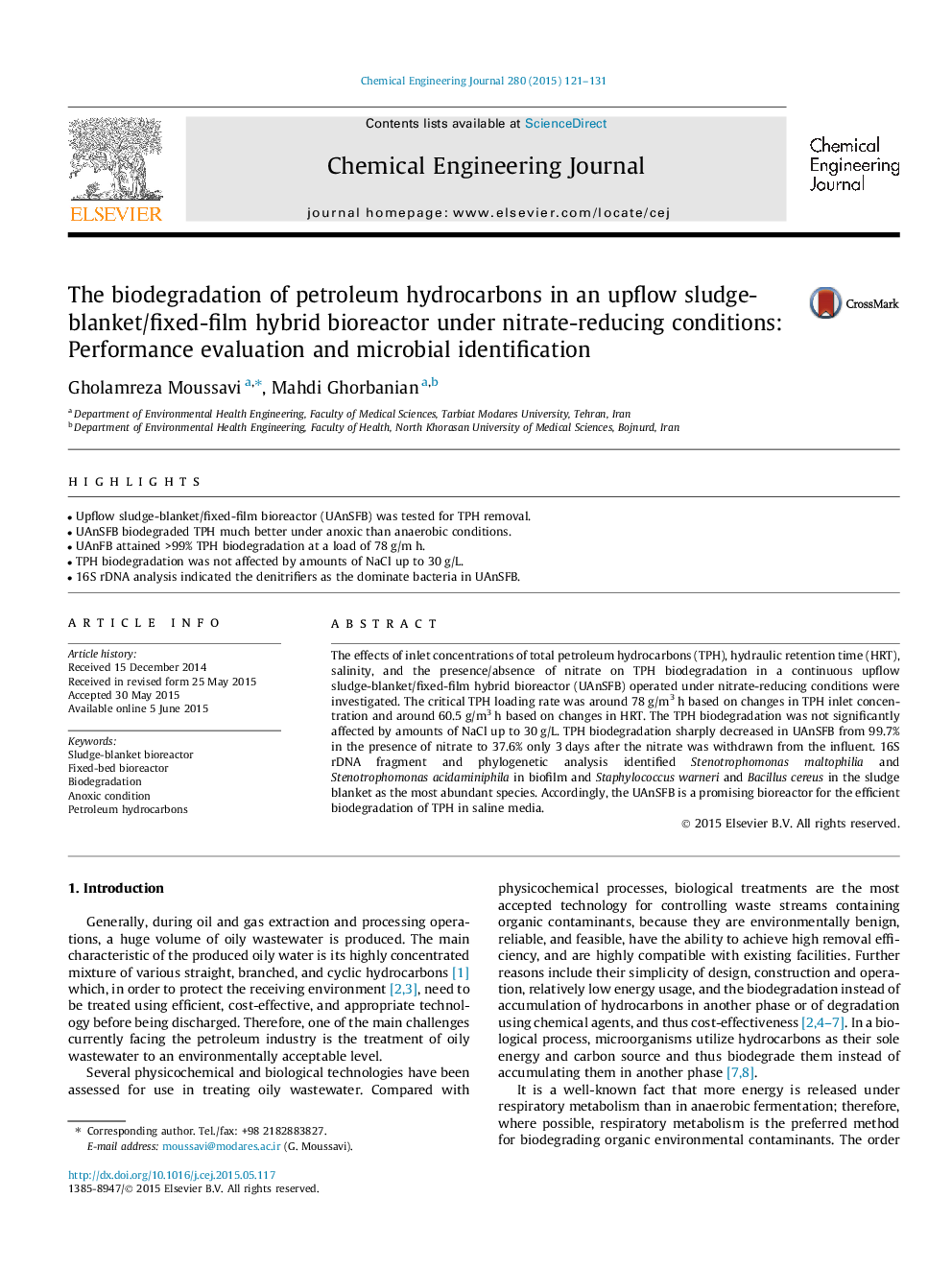| Article ID | Journal | Published Year | Pages | File Type |
|---|---|---|---|---|
| 6584245 | Chemical Engineering Journal | 2015 | 11 Pages |
Abstract
The effects of inlet concentrations of total petroleum hydrocarbons (TPH), hydraulic retention time (HRT), salinity, and the presence/absence of nitrate on TPH biodegradation in a continuous upflow sludge-blanket/fixed-film hybrid bioreactor (UAnSFB) operated under nitrate-reducing conditions were investigated. The critical TPH loading rate was around 78Â g/m3Â h based on changes in TPH inlet concentration and around 60.5Â g/m3Â h based on changes in HRT. The TPH biodegradation was not significantly affected by amounts of NaCl up to 30Â g/L. TPH biodegradation sharply decreased in UAnSFB from 99.7% in the presence of nitrate to 37.6% only 3Â days after the nitrate was withdrawn from the influent. 16S rDNA fragment and phylogenetic analysis identified Stenotrophomonas maltophilia and Stenotrophomonas acidaminiphila in biofilm and Staphylococcus warneri and Bacillus cereus in the sludge blanket as the most abundant species. Accordingly, the UAnSFB is a promising bioreactor for the efficient biodegradation of TPH in saline media.
Related Topics
Physical Sciences and Engineering
Chemical Engineering
Chemical Engineering (General)
Authors
Gholamreza Moussavi, Mahdi Ghorbanian,
